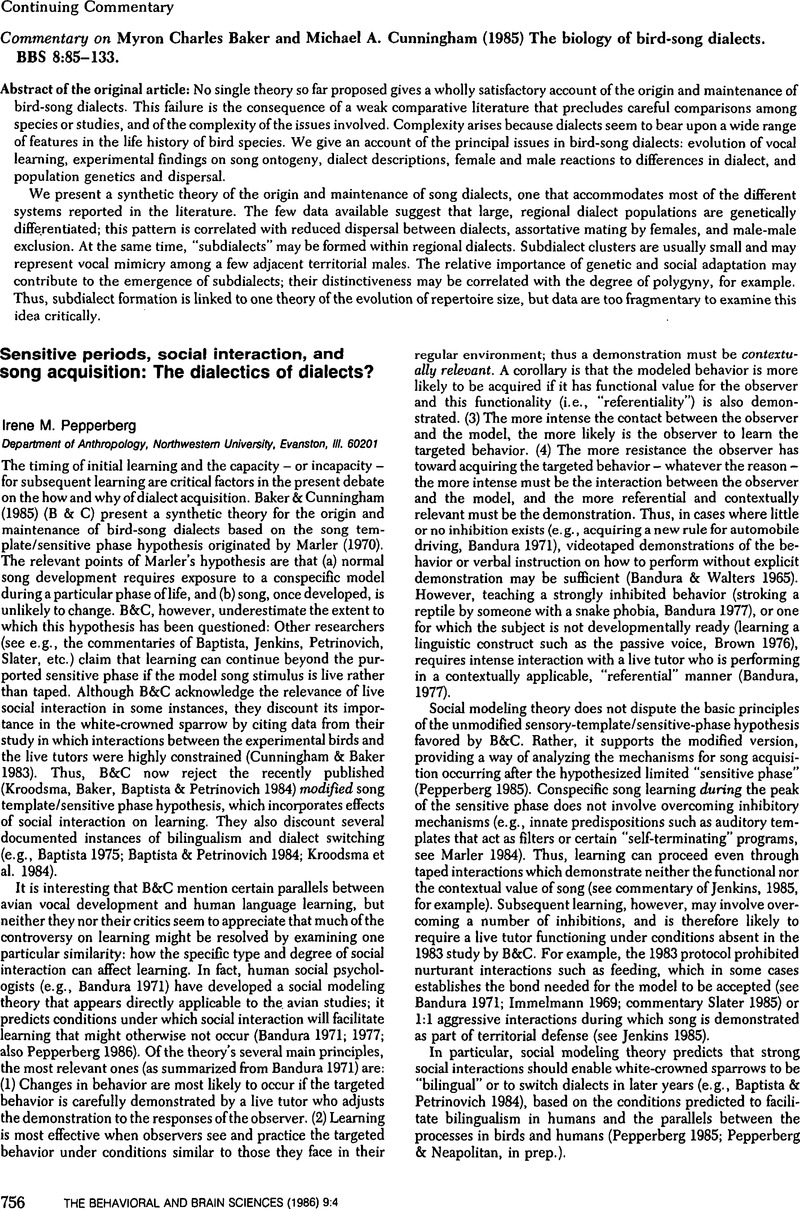Crossref Citations
This article has been cited by the following publications. This list is generated based on data provided by Crossref.
Pepperberg, Irene M.
and
Neapolitan, Denise M.
1988.
Second Language Acquisition: A Framework for Studying the Importance of Input and Interaction in Exceptional Song Acquisition.
Ethology,
Vol. 77,
Issue. 2,
p.
150.
Pepperberg, Irene Maxine
1990.
Vol. 19,
Issue. ,
p.
357.
Pepperberg, Irene M.
and
Schinke‐Llano, Linda
1991.
Language Acquisition and Form in a Bilingual Environment: A Framework for Studying Birdsong in Zones of Sympatry.
Ethology,
Vol. 89,
Issue. 1,
p.
1.
Pepperberg, Irene M.
1992.
Playback and Studies of Animal Communication.
p.
47.
Lyn, Heidi
2012.
The Oxford Handbook of Comparative Evolutionary Psychology.
p.
356.



